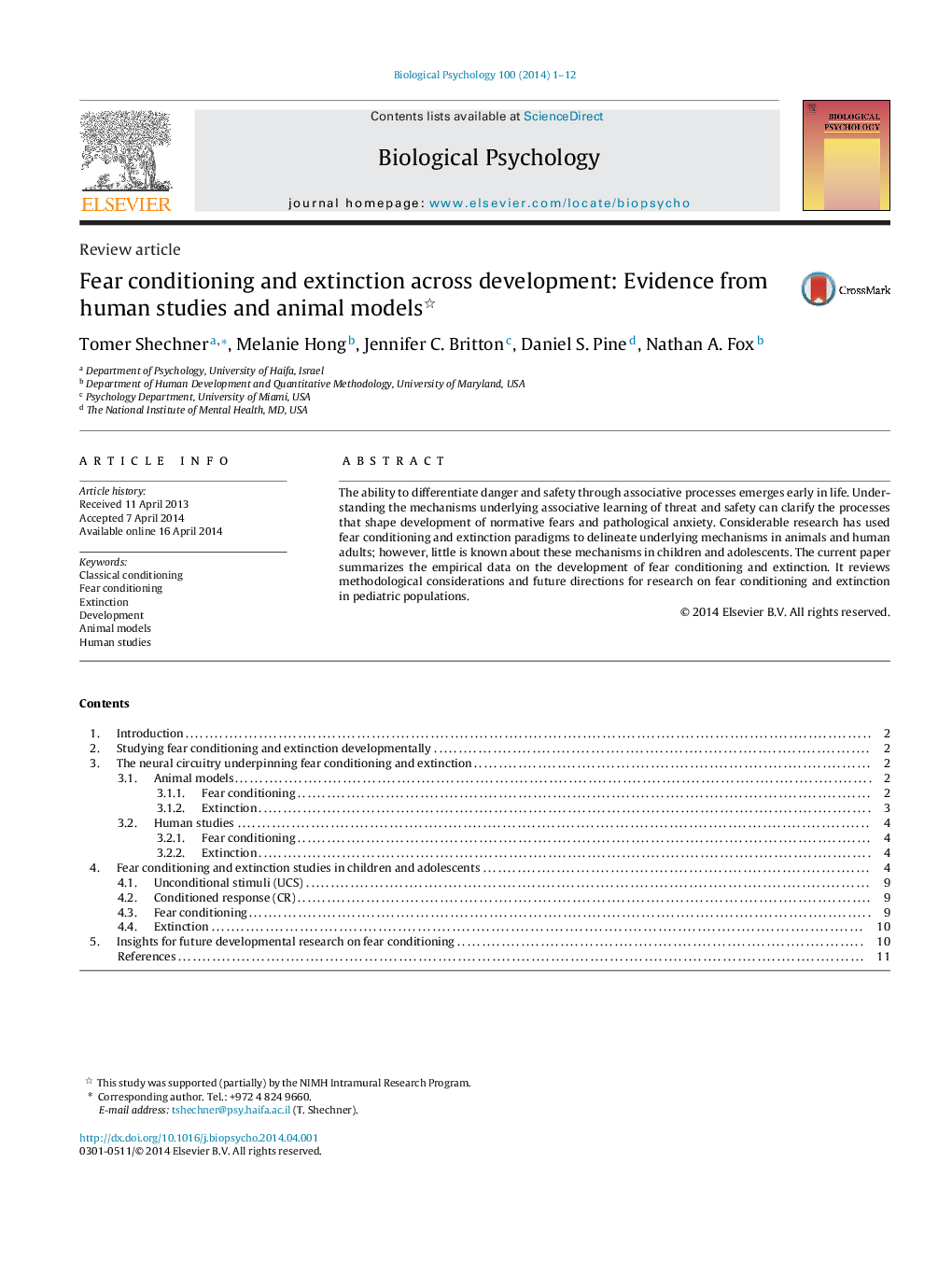| کد مقاله | کد نشریه | سال انتشار | مقاله انگلیسی | نسخه تمام متن |
|---|---|---|---|---|
| 920895 | 1473873 | 2014 | 12 صفحه PDF | دانلود رایگان |
• Successful fear conditioning and fear extinction in humans and rodents is highly dependent on the selection of a strong, potent, and evolutionarily relevant UCS.
• Fear acquisition is present in children as early as 3 months of age with older children showing increased CR compared to younger children.
• The available developmental data from research in animal models may suggest an essential difference in the neural architecture underlying fear extinction across development.
• Amygdala, insula and anterior cingulate (ACC) are implicated in human fear conditioning independent of the specific fear conditioning paradigm used.
• Similar to findings in animal models, neuroimaging studies in humans implicate the pivotal role of amygdala, PFC and hippocampus in extinction learning.
The ability to differentiate danger and safety through associative processes emerges early in life. Understanding the mechanisms underlying associative learning of threat and safety can clarify the processes that shape development of normative fears and pathological anxiety. Considerable research has used fear conditioning and extinction paradigms to delineate underlying mechanisms in animals and human adults; however, little is known about these mechanisms in children and adolescents. The current paper summarizes the empirical data on the development of fear conditioning and extinction. It reviews methodological considerations and future directions for research on fear conditioning and extinction in pediatric populations.
Journal: Biological Psychology - Volume 100, July 2014, Pages 1–12
